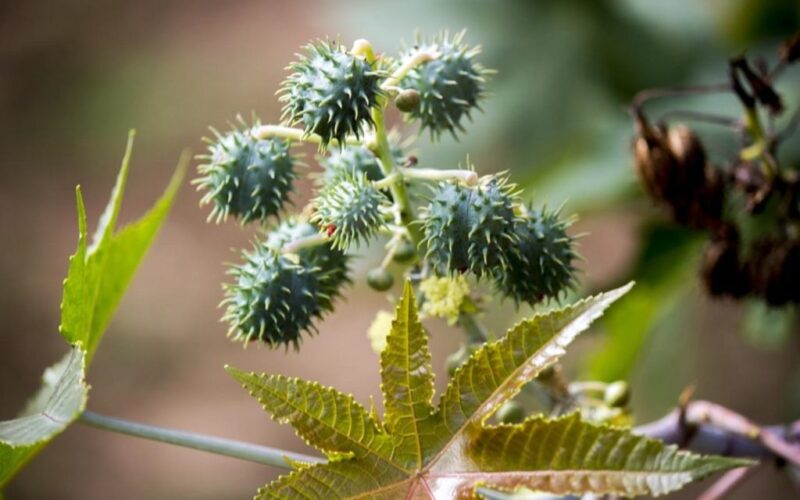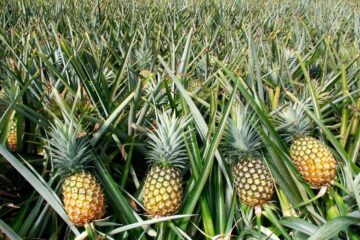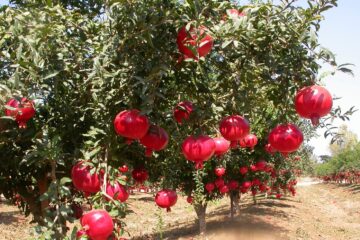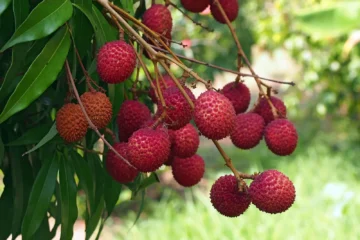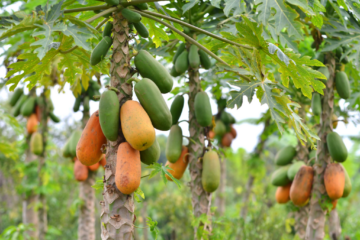Introduction: Castor is a significant oilseed crop cultivated in over 30 countries, including India, China, Brazil, and Russia. In India, it is grown on approximately 1.148 million hectares, mainly in Rajasthan, Telangana, Gujarat, Tamil Nadu, and Andhra Pradesh. The average production in India is about 1,666 kg per hectare. In Tamil Nadu, castor is often grown as an intercrop or border crop. Currently, long-duration varieties are predominantly cultivated.
Sowing Season:
In Tamil Nadu, the best time for sowing castor in rainfed areas is during the Aadi Pattam (July-August). For irrigated crops, Vaikasi Pattam (May-June) and Karthigai Pattam (November-December) are suitable.
Varieties:
- Y.R.C.H.1:
- Type: Hybrid
- Duration: 150-160 days
- Yield: 2,000 kg/ha in rainfed, 3,000 kg/ha in irrigated conditions
- Oil Content: 49%
- Special Features: Thorny capsules, resistant to capsule shattering and wilt disease, high resistance to leafhopper.
- Y.R.C.H.2:
- Type: Hybrid
- Duration: 180 days
- Yield: 2,089 kg/ha in rainfed, 3,200 kg/ha in irrigated conditions
- Oil Content: 49%
- Special Features: High resistance to wilt disease and leafhopper.
- Y.T.B.1:
- Duration: 115-120 days for first harvest
- Special Features: Non-lodging, suitable for border cropping, yields for up to two years.
Land Preparation:
Plow the field 2-3 times using a country plow or iron plow. Apply 12.5 tons of farmyard manure and 100 kg of gypsum per hectare during the final plowing.
Seed Treatment and Sowing:
Treat seeds with 2g of Thiram or Carbendazim per kg and soak for 4 hours before sowing. For rainfed crops, treat seeds with 1% potassium chloride solution three hours before sowing. Sow seeds at a depth of 4 cm.
- Spacing:
- Regular Varieties: 90×60 cm for rainfed, 90×45 cm for irrigated.
- Hybrid Varieties: 120×90 cm for rainfed, 150×120 cm for irrigated.
Gap Filling: Fill gaps on the 15th day after sowing. Maintain one plant per hill. Remove unhealthy or pest-affected plants.
Nutrient Management:
Apply 12.5 tons of farmyard manure per hectare. Based on soil testing, apply the following fertilizers:
- Rainfed Varieties:
- Regular: 45 kg N, 15 kg P, 15 kg K.
- Hybrid: 60 kg N, 30 kg P, 30 kg K.
- Irrigated Varieties:
- Regular: 60 kg N, 30 kg P, 30 kg K.
- Hybrid: 90 kg N, 45 kg P, 45 kg K.
Apply the entire P as a basal dose. Split the N and K into two equal parts and apply half as a basal dose and the remaining in two splits during crop growth.
Weed Management:
Apply 2 liters of Fluchloralin per hectare mixed in 500 liters of water before weed emergence. Hand weed at 20 and 40 days after sowing.
Intercropping:
In areas with moderate irrigation facilities, intercrop castor with groundnut in a 6:1 ratio for higher yields. In areas with delayed monsoon, intercrop castor with black gram or green gram in a 2:1 ratio. For irrigated conditions, intercrop castor with onion in a 2:1 ratio.
Pest Management:
- Castor Semilooper:
- Symptoms: Larvae feed on leaves, causing them to dry and fall.
- Control: Spray 5% neem seed kernel extract or 2.5 ml of Triazophos per liter of water.
- Castor Capsule Borer:
- Symptoms: Larvae feed on capsules, causing significant damage.
- Control: Spray 5% neem seed kernel extract or 2 ml of Chlorpyrifos per liter of water.
Disease Management:
- Wilt Disease:
- Symptoms: Leaves droop, plants appear wilted and turn brown with white fungal growth.
- Control: Mix 2.5 kg of Trichoderma viride with farmyard manure, incubate for 15 days, and apply between rows.
- Seedling Blight:
- Symptoms: Seedlings die with light green patches extending to petioles.
- Control: Ensure proper drainage and spray 3g of copper oxychloride per liter of water.
Harvesting:
Harvest when more than one capsule on the plant is dry. Dry harvested clusters in the sun and thresh them to extract seeds.
Conclusion:
By following these cultivation practices, farmers can achieve high yields and contribute to the rural economy through castor cultivation.
P. Maheswaran, M. Arunraj, C. Sabarinathan, Agricultural Science Centre, Kamatchipuram, Theni District.

